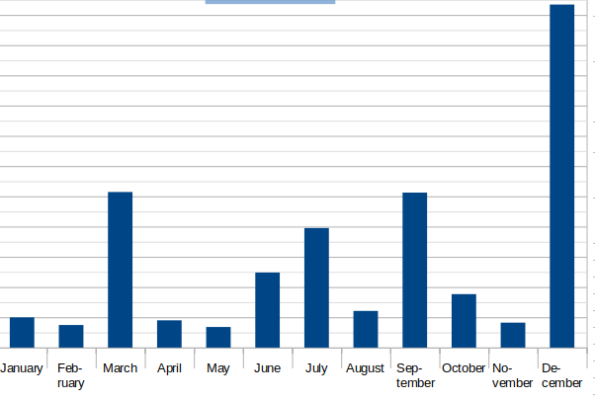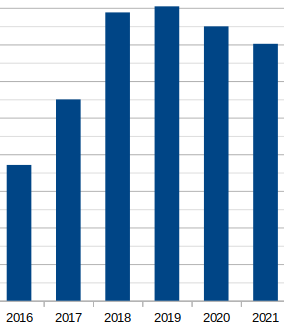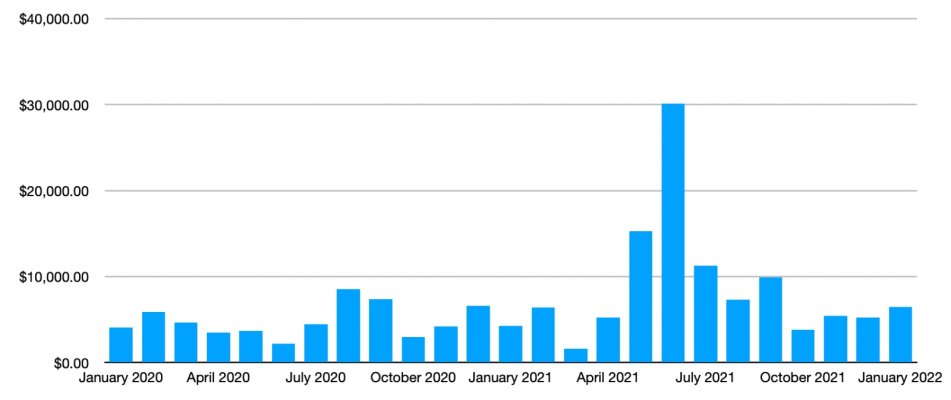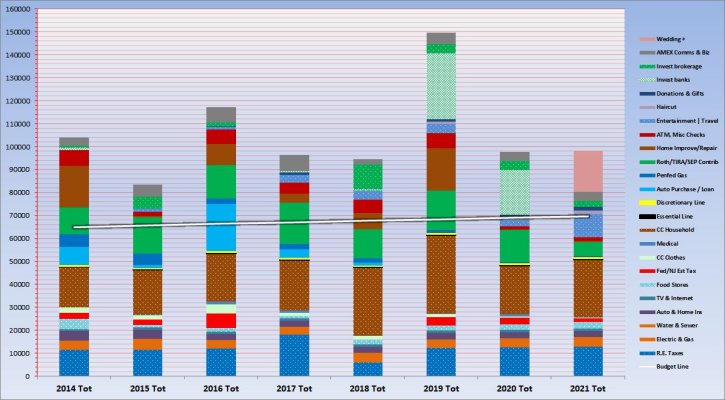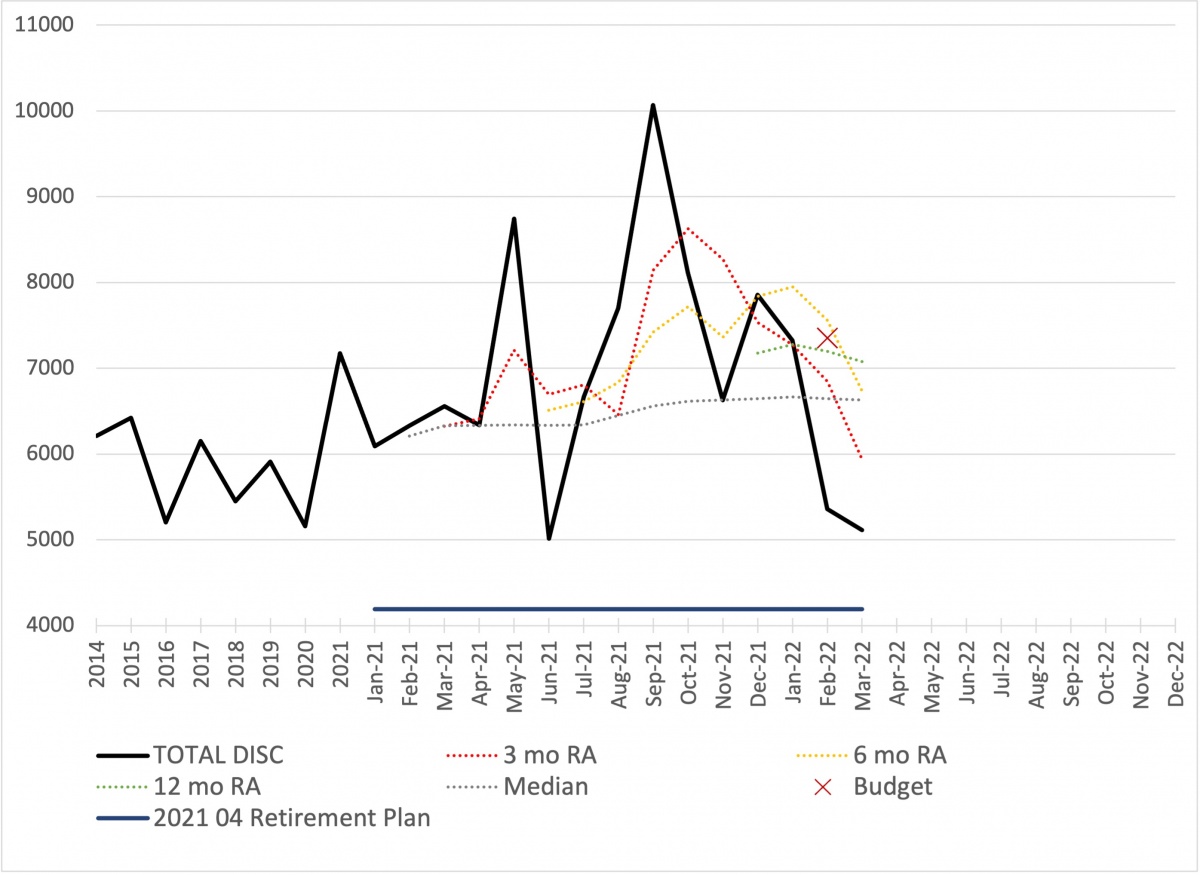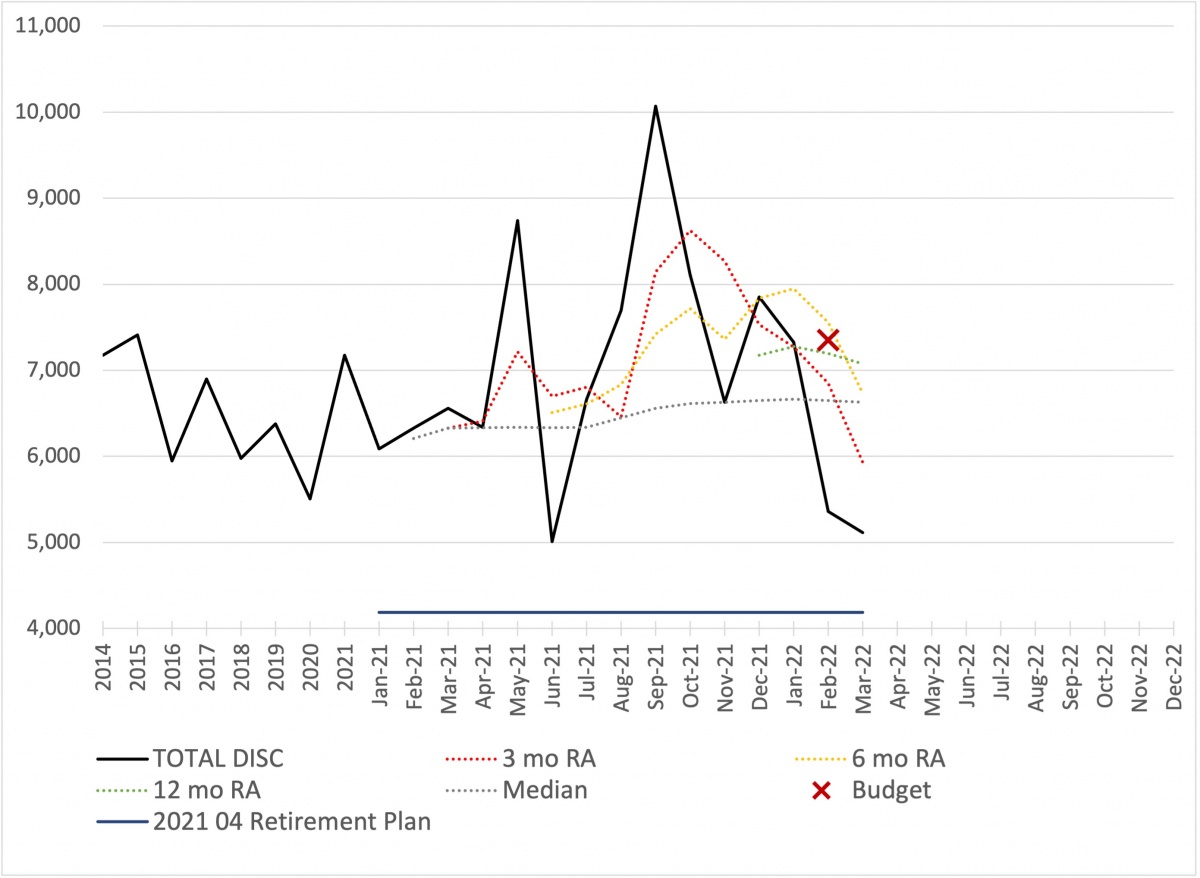corn18
Thinks s/he gets paid by the post
- Joined
- Aug 30, 2015
- Messages
- 1,890
Retired last year @ 55. We didn't follow a budget this past year, just spent what we wanted. Now that I have a year's worth of data, I am trying to figure out what to do with it for planning the next 40 years. I had a number I used to decide to retire, but it was all wrong.
The only noisy data is what I categorize as our discretionary spending. It's the wrong label for what it includes, but it's what I have used for 20 years. Here's what's in the noisy data:
Auto
Fuel
Clothes
Pets
Food
Dining
Gifts
Health / Beauty
House
Entertainment
Misc
The nosiest is Auto (new tires, maint), pets (ER visits, got a puppy) and house (bought a new house last year and now filling it up with stuff).
Here's what the data show:
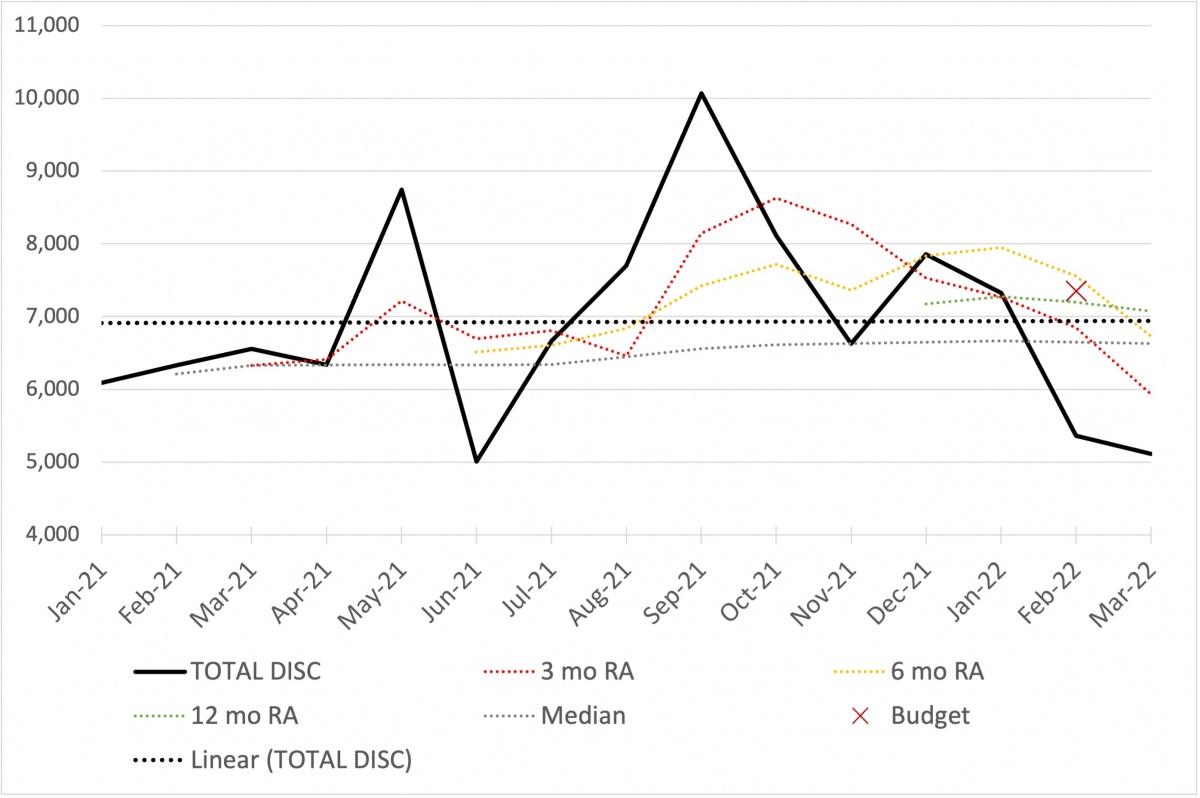
For future planning, I am using the red X on the right. Seems like as good a guess as any.
What do you think?
The only noisy data is what I categorize as our discretionary spending. It's the wrong label for what it includes, but it's what I have used for 20 years. Here's what's in the noisy data:
Auto
Fuel
Clothes
Pets
Food
Dining
Gifts
Health / Beauty
House
Entertainment
Misc
The nosiest is Auto (new tires, maint), pets (ER visits, got a puppy) and house (bought a new house last year and now filling it up with stuff).
Here's what the data show:

For future planning, I am using the red X on the right. Seems like as good a guess as any.
What do you think?
Last edited:

